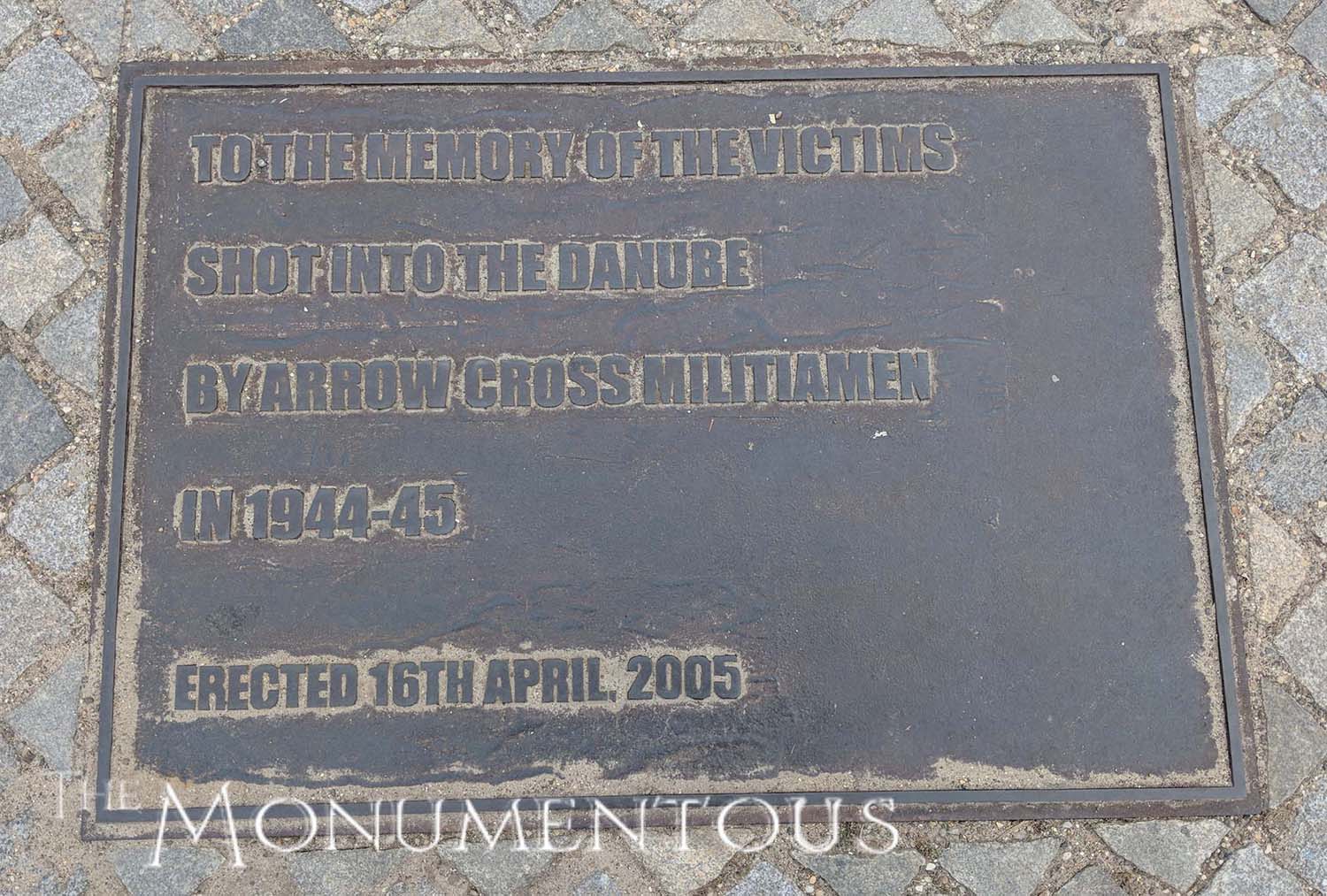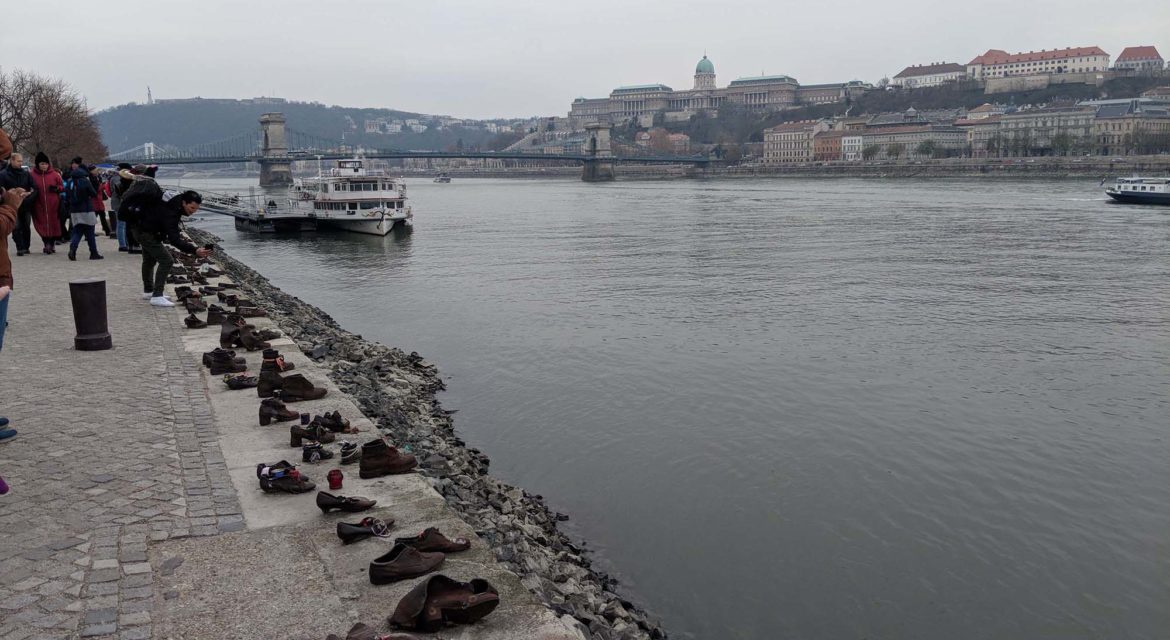 Monuments and memorials that celebrate the memories and sacrifices of individuals and entire groups come in all shapes and sizes, but few are as subtle yet powerful as the Shoes on the Danube memorial in Budapest, Hungary. The sixty pairs of period-appropriate shoes made out of iron are spread across a small section of the Danube Promenade where thousands of people were forced to take off their shoes and then fell into the river after being killed. The memorial is a reminder of what it can mean to see tragic events memorialized in a way that is as respectful as it is compelling.
Monuments and memorials that celebrate the memories and sacrifices of individuals and entire groups come in all shapes and sizes, but few are as subtle yet powerful as the Shoes on the Danube memorial in Budapest, Hungary. The sixty pairs of period-appropriate shoes made out of iron are spread across a small section of the Danube Promenade where thousands of people were forced to take off their shoes and then fell into the river after being killed. The memorial is a reminder of what it can mean to see tragic events memorialized in a way that is as respectful as it is compelling.

Murders Along the Edge of the River Danube
Hungary was initially aligned with Nazi Germany during World War II, but in October 1944, Germany organized a coup of the government and installed a new one dominated by the fascist Arrow Cross party. More than 70,000 Jews were marched out of the city and eventually into various concentration camps.
 By November of 1944, the Arrow Cross ordered the remaining Jews in Budapest into a concentrated and closed ghetto. As many as 20,000 Jews from this ghetto were taken from it and subsequently murdered along the Danube River bank by the Arrow Cross Party police. Victims were forced to remove their shoes at gunpoint and then shot before falling over the edge of the river to be washed away by the freezing waters.
By November of 1944, the Arrow Cross ordered the remaining Jews in Budapest into a concentrated and closed ghetto. As many as 20,000 Jews from this ghetto were taken from it and subsequently murdered along the Danube River bank by the Arrow Cross Party police. Victims were forced to remove their shoes at gunpoint and then shot before falling over the edge of the river to be washed away by the freezing waters.
Sculptors Gyula Pauer and Can Togay collaborated to create the Shoes on the Danube memorial, which features shoes made out of iron in all different shapes and sizes, representing the variety and scope of the victims. The shoes are attached to the stone embankment, and behind them lies a 40 meter long, 70 cm high stone bench. At three points are cast iron signs, with the following text in Hungarian, English, and Hebrew:
“To the memory of the victims shot into the Danube by Arrow Cross militiamen in 1944–45. Erected 16 April 2005.
The experiences associated with this small but powerful memorial have enabled both residents and visitors to understand the tragedy that took place on the banks of the Danube River on a whole new level.

Experiencing and Understanding
While memorials that have the names and representations of victims prominently displayed on them can provide visitors with an incredible sense of scope, they don’t always allow those visitors to relate to or connect with the event. Shoes on the Danube embraces the ambiguity of the victims that suffered at this location and is all the stronger for it. These small representations of who these victims were allow visitors to identify that much more closely with these people.
The sixty pairs of period-appropriate shoes made out of iron represent only a fraction of the victims, but that absence provides another means for the audience to relate to the event. The connections it enables with people in the present can be seen directly in the flowers, wreathes and candles that are continually placed along the river bank, and indirectly seen by the prominent position the memorial takes in guides to the city.
 That positioning is important since the memorial is not only in the midst of restaurants, tours and other economic activity on the Danube river, but the stone embankment is near a main traffic and pedestrian thoroughfare. By creating a moment that functions alongside and amidst this activity, both residents and visitors can appreciate the history and legacy that Shoes on the Danube has come to represent.
That positioning is important since the memorial is not only in the midst of restaurants, tours and other economic activity on the Danube river, but the stone embankment is near a main traffic and pedestrian thoroughfare. By creating a moment that functions alongside and amidst this activity, both residents and visitors can appreciate the history and legacy that Shoes on the Danube has come to represent.

A Legacy That Goes Beyond Tragedy
 The Shoes on the Danube monument provides visitors with an incredible sense and perspective of the people who lost their lives on the banks of the Danube River during World War II. In creating a memorial that is as much about what isn’t in it as what is in it, the piece allows visitors to identify with this history in an especially deep manner. Doing so has created a legacy for Budapest that is about much more than this tragedy and will help guide the future while also serving an am an important reminder of the past.
The Shoes on the Danube monument provides visitors with an incredible sense and perspective of the people who lost their lives on the banks of the Danube River during World War II. In creating a memorial that is as much about what isn’t in it as what is in it, the piece allows visitors to identify with this history in an especially deep manner. Doing so has created a legacy for Budapest that is about much more than this tragedy and will help guide the future while also serving an am an important reminder of the past.

